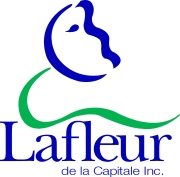This is the second article on my trip to Italy last July where I competed for team Canada at the Junior World Orienteering Championships (JWOC). When the training camp wrapped up after a few intense days of running, it was time to race. The week of racing has a format not unlike that found in the Canadian ski championships. We started the week with a sprint. Next was the long race, then the middle distance, and finally the relay. † 

Team poster...
Having already raced in one JWOC, I knew what to expect in terms of competition: a hundred and eighty of the best orienteers in the world, and then us. Last year in Sweden, I donít believe any Canadian or American cracked the top 100 spots on the menís side. In a way this was good for my mental state before the start of the first race, the sprint. There were no expectations, and thus, no pressure. I knew I would be faster than last year, but it wouldnít have been hard to do that (I wound up second last in Sweden the previous year, placing 170th).
This year, the sprint took place in the villages of Mezzano and Imer, two small mountain towns in the Italian Dolomites. As with most of the towns in Italy, these villages have been around for hundreds, if not thousands of years. This long period of time for growth has resulted in an eclectic grouping of buildings that, when seen on a map, look like the town planner was puffing on something when he drew up the area. There are no blocks to speak of, triangular buildings everywhere, underpasses so low you have to duck your head to get through, alleyways barely narrow enough to run in and cobbled streets so twisty that, when sprinting, you wind up running on, and into the walls.
I knew before I started that, for a lot of the race, I wouldnít be able to navigate as fast as I could run. This meant I had to open up where I could, and really control myself whenever I entered a detailed area. I started slow, with a bad route to the first control, but I held it together and started to get into a good rhythm. I almost lost it when I left a control the exact opposite direction of the way I should have (this is easier to do than it sounds. On an orienteering map there are lines that point to magnetic north that you orient your compass needle to. If you have your map upside down, or read north as south on the compass, you can easily go the wrong way without knowing it). I got about 10 meters down a side street before checking my compass, having an OH SH** moment, turning around, and getting back on course. On the first real running leg, I pushed hard, and didnít read my map as much as I should have. I wound up running off a 6 foot wall that was marked as uncrossable. I kept going, but I thought for sure I was going to be disqualified for going in an out of bounds area. I kept my running strong to the end, and crossed the line in just over 17 minutes, only 2:30 behind the winner. I knew I had had a good race, but it took a while for the other racers to finish and see how they stacked up against me. I wound up 75th overall, nearly 100 places better than last year! On top of that, I was the top racer from North America in the competition.









Sprint finish.

Lee's reaction to his split times.
The long distance race was about as different as you could possibly get from the sprint. We were racing at Passo Rolle, a 2000m high mountain pass that was partially in the alpine. Five minutes after my start, clouds started to roll through the trees, lightning crackled, thunder boomed above and the rain came down. This only added to the incredibly tough running conditions we had that day. The entire race took place in a steep-sided valley, so we were rarely, if ever, running on flat ground. Most of the area was covered in rock, in the form of cliffs, boulder fields, stony creek beds, moss-covered bedrock, gullies and glacial erratics. There were also clearcuts that were littered with stumps and woody debris and had partially grown over with stinging nettle, thick, tall grass and small trees.†
The map itself was incredibly detailed, and I was never able to get in a comfortable rhythm while reading it. Mostly, the race felt like guesswork. I could only get to within a hundred meters of the control confidently. After that, I wound up getting led to the control by other people, or making at guess at where it was, sometimes finding it, sometimes not. After nearly an hour of being thoroughly frozen by creek crossings, pouring rain, and wet branches I felt like I was losing a lot of my functioning, both mental and physical. My hands could barely re-fold the map, I made multiple 5-odd minute mistakes, I was starting to seize up in my legs, and my focus was going. I took two clif shots, which helped, but what really saved me was the Swede who caught me near the end of the race. I had all but given up on salvaging a top-100 placing when one of the top Swedish guys came from behind me.†
Following people while orienteering is frowned upon, and can be hazardous to your own race. The person you are following will make mistakes, or out-run you leaving you without a clue of where you are. Despite the risks, I was so tired and unfocussed that I jumped on his tail and let him lead me around the last few controls. I was still with him at the finish, and managed to out-sprint him through the 250 meters of shin-deep mud that the finish chute had been churned into. After more than 10 kilometers, 500 meters of climb and an hour and three-quarters running, I was 95th. Surprisingly, everyone else from the U.S. and Canada had worse races than I did, and I was the top North American again.†

Graeme, just after finishing the long.
After recovering for a day from the long distance race we had the middle distance qualifier and final over two days. The middle distance is quick paced, with lots of controls, tough map reading and no room for error. While the qualifier went reasonably well, and I made the B final, I blew one control on the final and dropped like a rock in the standings. I was 104th overall, and less than happy with my race.†

Staging area for the middle distance.

Swedish middle distance finalist.
The week finished with the relay race. Each country puts in one or two teams of 3 athletes, with each athlete running nearly 7km. The relay is the only race in the week that was a mass start. I decided I wanted to go first this year, and Iím glad I did. It was quite literally insane for the first fifteen minutes of the race. There were 65 teams starting at once. The start was set up so everyone was lined up across a field with the race maps at our feet. Everything went silent with 30 seconds to go. With five seconds, everyone crouched, put a hand on their map and waited for the gun.†
Moments after that, we were funneled through a tunnel of thousands of cheering spectators, through a massive mud puddle and into the forest. All I remember from the first few frantic minutes was chaos. Try to imagine nearly 5 dozen people running as fast as they can over, under, around and through everything in their path. There were bodies flying past me, people tripping and falling, racers who had already gotten lost calling out and hoping someone would help them, bottlenecks formed going through thorn patches, and I was almost always close enough to someone to hear and feel their breath. Things started to settle down soon enough though, and I found myself running with a pack of 6 guys. The course took us through a forest filled with house-sized boulders, narrow squeezes through rock fields, steep hills you literally had to crawl up, open meadows and thick, undergrowth filled forest. My run was pretty clean, but a few mistakes on the last little loop cost me. I wound up finishing just ahead of the second Canadian team, in 36th position. The rest of my team held up well, and we were almost poised to crack the top 30 but our last runner made a mistake. We doused him with champagne anyway (it was only a euro thirty a bottle) as he came down the finish chute to finish in 40th spot.†

Let that champagne splash!

Team Canada after the Relay.
While the relay was fun, the notorious JWOC afterparty topped the week off in style. Itís sort of an unspoken rule that you have to dress up for JWOC parties so, while in Venice, the Canadian team picked up gondolier costumes complete with sailor hats, bandanas and striped shirts. We definitely won the best costume of the night, and I donít think many of us came back with our hats on.†

Party outfits!
All in all, it was an awesome week of racing, and it was great to get more international experience under my belt. While racing was the focus of the trip, we didnít want to leave Italy without seeing a little more first, so we packed up our bags and decided to check out the Dolomites a little closer. Stay tuned for part 3Ö
Interesting Reading. . .


